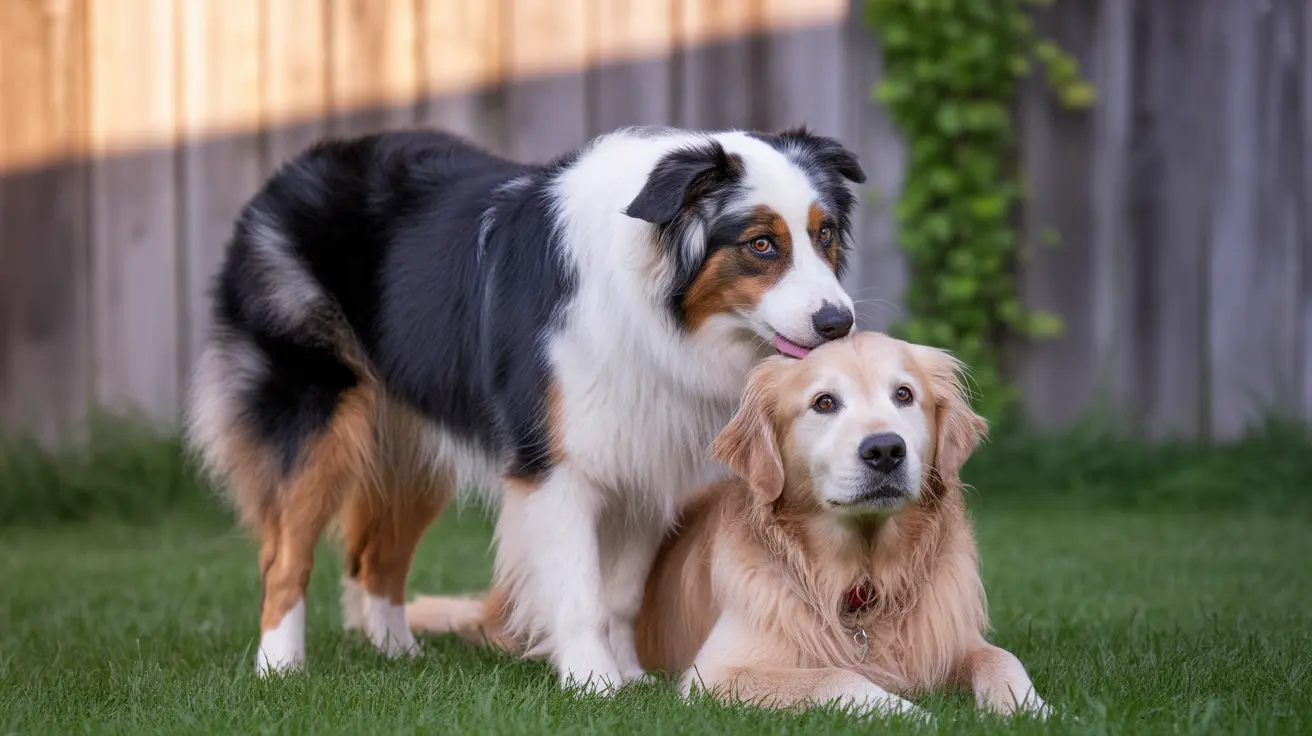The Social Significance of Dog-to-Dog Licking
Dogs are inherently social animals with deep-rooted pack mentalities inherited from their wolf ancestors. When dogs lick each other, they're often engaging in important social rituals that serve multiple purposes within their community.
This behavior typically begins in puppyhood, where young dogs learn social cues and bonding behaviors from their mothers and littermates. The habit continues into adulthood as a vital form of communication and relationship building.
Pack Hierarchy and Submission Signals
Licking between dogs often reflects the subtle dynamics of pack hierarchy. Submissive dogs frequently lick the ears, face, or mouth of more dominant dogs as a sign of respect and deference. This behavior helps maintain social order and prevent conflicts within the group.
In multi-dog households, you might notice certain patterns in which dogs initiate licking behaviors, providing insight into the established pecking order among your pets.
The Health and Grooming Connection
Beyond social aspects, dogs lick each other as part of mutual grooming practices. This behavior serves both practical and social purposes:
- Cleaning hard-to-reach areas
- Removing debris and parasites
- Maintaining pack hygiene
- Strengthening social bonds
Dogs can also detect subtle changes in their companions' health through licking. Their keen sense of smell allows them to identify potential infections, injuries, or other health issues that might require attention.
Signs of Affection and Bonding
Much like humans show affection through physical touch, dogs use licking as a way to express care and strengthen relationships with their canine companions. This behavior releases endorphins in both the giver and receiver, promoting emotional well-being and social connection.
When to Monitor Licking Behavior
While dog-to-dog licking is generally normal, certain situations warrant closer attention:
- Excessive or obsessive licking
- Signs of discomfort in the recipient dog
- Changes in normal licking patterns
- Accompanying signs of anxiety or stress
Frequently Asked Questions
Why do dogs lick other dogs' ears as a form of social bonding and communication?
Dogs lick each other's ears to show affection, establish trust, and maintain social bonds within their group. This behavior is rooted in their pack mentality and serves as a natural way to communicate care and friendship.
Can excessive ear licking between dogs indicate an ear infection or health issue?
Yes, if one dog repeatedly licks another dog's ears, it might be detecting an infection or health problem. Dogs can smell subtle changes in body chemistry and may be drawn to the scent of infection or inflammation.
How does ear licking serve as a grooming behavior among dogs?
Ear licking is part of mutual grooming, helping to clean areas that dogs can't reach themselves. This behavior serves both practical hygiene purposes and strengthens social bonds between pack members.
What does it mean when a submissive dog licks the ears of a dominant dog?
When a submissive dog licks a dominant dog's ears, it's displaying deference and respect within the pack hierarchy. This behavior helps maintain social order and prevent conflicts between dogs.
How can I tell if my dog's ear licking is normal or a sign of anxiety or compulsive behavior?
Normal ear licking is occasional and relaxed. If your dog shows obsessive licking, seems anxious, or the recipient dog appears uncomfortable, it might indicate stress or compulsive behavior requiring professional attention.
Understanding why dogs lick other dogs helps us better appreciate their complex social nature and ensure healthy interactions between our canine companions. While most licking behavior is normal and beneficial, staying attentive to changes in patterns can help maintain your dogs' physical and emotional well-being.






